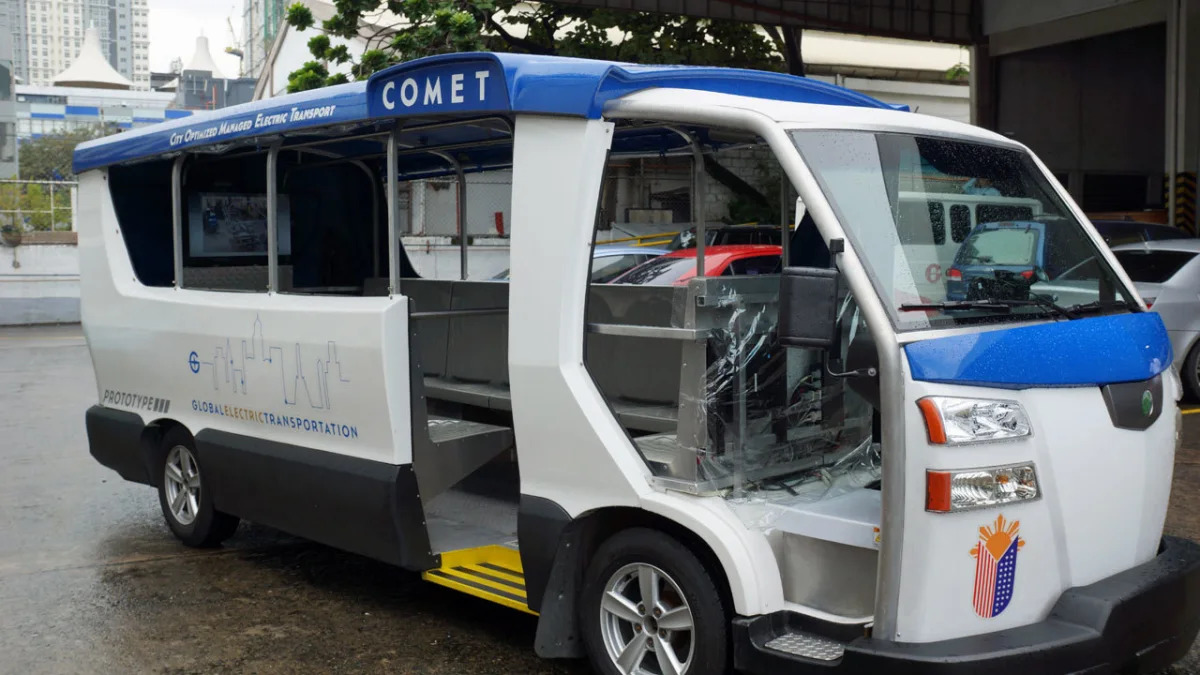For decades, the dirty diesel-burning jeepney has been the colorful face of public transportation in the Philippines. That may by about to change, with the introduction of the COMET (City Optimized Managed Electric Transport): a new approach to the traditional system, based around an eighteen-passenger electric vehicle.
Not only does COMET do away with the diesel, it also aims to improve on practically every other aspect of the customer experience. Produced by Global Electric Transport (GET) in partnership with American firm Pangea Motors, these battery-powered people movers are each equipped with CCTV cameras for safety, WiFi and a cashless payment system called TITO (tap in, tap out) for convenience. Operators will not only get additional training to help avoid some common dangerous driving practices, they will be paid salaries (with benefits and bonuses) in an effort to discourage unsafe fatigue from extra-long work days. Additionally, a financing program for owners will make it easy to replace their current jeepneys.
The vehicle itself is similar to the traditional jeepney, with no side glass for that open-air feeling and bench seating. It's said to have enough range to go 100 kilometers (62 miles) between charges and uses an AC motor to take advantage of regenerative braking and lower maintenance. Top speed is regulated at 60 kph (37 miles per hour) for safety.
The first half-dozen vehicles are just now being completed, but with an agreement in place for 10,000 more for transport group Pasang Masda, the company is hopeful it can reach its goal of producing 20,000 over the next five years. That would certainly be a step toward hitting the country's goal of one million electric vehicles by 2020.
Not only does COMET do away with the diesel, it also aims to improve on practically every other aspect of the customer experience. Produced by Global Electric Transport (GET) in partnership with American firm Pangea Motors, these battery-powered people movers are each equipped with CCTV cameras for safety, WiFi and a cashless payment system called TITO (tap in, tap out) for convenience. Operators will not only get additional training to help avoid some common dangerous driving practices, they will be paid salaries (with benefits and bonuses) in an effort to discourage unsafe fatigue from extra-long work days. Additionally, a financing program for owners will make it easy to replace their current jeepneys.
The vehicle itself is similar to the traditional jeepney, with no side glass for that open-air feeling and bench seating. It's said to have enough range to go 100 kilometers (62 miles) between charges and uses an AC motor to take advantage of regenerative braking and lower maintenance. Top speed is regulated at 60 kph (37 miles per hour) for safety.
The first half-dozen vehicles are just now being completed, but with an agreement in place for 10,000 more for transport group Pasang Masda, the company is hopeful it can reach its goal of producing 20,000 over the next five years. That would certainly be a step toward hitting the country's goal of one million electric vehicles by 2020.










Sign in to post
Please sign in to leave a comment.
Continue